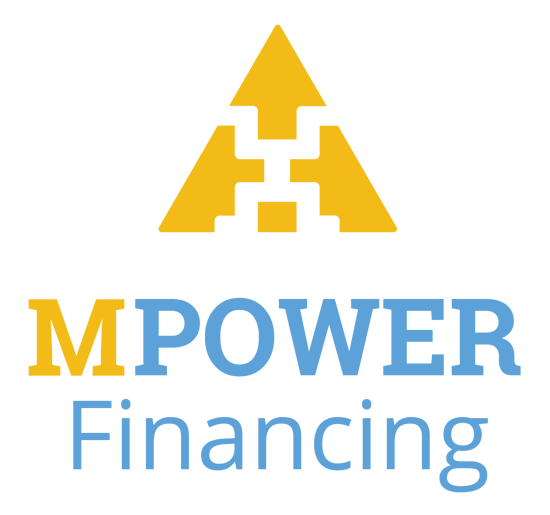Average Nursing Student Debt: How Much Debt Do Nurses Have?
Nursing school average debt varies by degree: $23,302 for ADN RN or $28,917 for BSN RN.

Many, or all, of the products featured on this page are from our advertising partners who compensate us when you take certain actions on our website or click to take an action on their website. However, this does not influence our evaluations. Our opinions are our own. Here is a list of our partners and here's how we make money.
The average nursing student debt depends on the type of program you attend:
- Associate Degree in Nursing (ADN): $23,302 average debt.
- Bachelor of Science in Nursing (BSN): $28,917 average debt.
- Master of Science in Nursing (MSN): $49,047 average debt.
These average debt levels and payment amounts are based on an analysis of federal student aid data from the U.S. Department of Education’s College Scorecard. The debt data is current as of May 2024.
» MORE: Student loan debt statistics
Here’s what monthly payments would look like for registered nurses with an ADN, BSN or MSN degree. This is assuming a 6.53% rate for federal Direct Loans for undergraduates and a 8.08% rate for Direct Unsubsidized Loans for graduate and professional students along with a standard 10-year repayment term:
Monthly Payment by Nursing Degree
| ADN | BSN | MSN | |
|---|---|---|---|
| Average debt | $23,302 | $28,917 | $49,047 |
| Monthly payment | $265 | $325 | $597 |
Advertisement



Student loans from our partners

on SoFi® website
SoFi® 

Fixed APR
4.24-9.99%
Min. credit score
650
on Earnest website
Earnest 
Fixed APR
4.79-9.99%
Min. credit score
665

on Credible’s website
ELFI 

Best for faster repayment options
Fixed APR
4.88-8.44%
Min. credit score
680
What is the average nursing student debt?
Almost 70% of students use nursing student loans to help pay for their education, based on the most recent data from the American Association of Colleges of Nursing. The average you’ll owe post-graduation will be a byproduct of how many years you spend in school.
You can become a registered nurse by earning a two-year ADN or a four-year BSN degree. Shorter programs can result in less student debt on average, but ADNs can still end up with large balances: an analysis of federal data revealed that small numbers of ADN and BSN RNs have average student loan balances over $40,000 and $50,000, respectively.
» MORE: How many Americans have student loan debt?
While the most recent data shows that average MSN student loans are a little less than $50,000, they can come away with a heftier student loan bill, especially if they attend a top-tier institution. For example, students in Duke University’s MSN program finish school with an average debt of $84,309. At Johns Hopkins University, average MSN debt is $97,548.
How to pay off nursing school debt
Depending on your salary as a nurse, you may be stuck with your debt for a long time. A 2019 survey by medical industry website Medscape found that 20% of nurses older than 55 still have student loans. These tips can help you pay off school debt:
- Investigate forgiveness programs. Multiple nursing school debt forgiveness programs are available that can eliminate part or all of your remaining nursing school debt. To be eligible for most of these programs, you’ll need to work for a public service employer, in a critical shortage area or both.
- Find the right repayment plan. There are multiple student loan repayment options. The standard plan — 120 payments over 10 years — is best if you can afford your loan payments. If your debt is stretching you a little too thin, an income-driven plan can offer a more manageable monthly bill.
- Pay loans off faster. If you’re comfortable with the standard plan, consider making extra payments to get rid of your nursing school debt faster. You could even refinance with a private lender — especially if you have higher interest graduate school loans — provided you don’t need income-driven plans and won’t qualify for forgiveness.
If you’re still in the planning stages of your education, be sure to review scholarships for nurses. You won’t have to repay this money, and it will decrease the amount you have to borrow.
Average Student Loan Amounts by Debt Type
| Debt type | Average debt |
|---|---|
| $29,300. | |
| $77,300. | |
| $30,639. | |
| $132,740. | |
| $51,850. | |
| $212,341. | |
| $296,500. | |
| $170,956. | |
| $40,000-$54,999. | |
| $202,647. | |
Sources1. 2024 College Board. 2. 2019-20 National Center for Education Statistics. 3. Q4 2024 Federal Student Aid Portfolio. 4. 2019-20 National Center for Education Statistics. 5. 2019-20 National Center for Education Statistics. 6. 2024 Association of American Medical Colleges. 7. 2023 American Dental Education Association. 8. 2024 American Association of Colleges of Pharmacy. 9. 2017 American Association of Colleges of Nursing. 10. 2024 American Veterinary Medical Association. | |
Article sources
NerdWallet writers are subject matter authorities who use primary,
trustworthy sources to inform their work, including peer-reviewed
studies, government websites, academic research and interviews with
industry experts. All content is fact-checked for accuracy, timeliness
and relevance. You can learn more about NerdWallet's high
standards for journalism by reading our
editorial guidelines.
AD
Refinance Your Student Loans with Earnest: smarter rates, total flexibility, no fees.
Check rate
on Earnest's website

AD

Refinance Your Student Loans with Earnest: smarter rates, total flexibility, no fees.
- Fixed APRs starting at 4.79%, Variable Rates starting at 5.88%;
- Customize your term down to the month (5–20 years);
- Skip one payment every 12 months.
Check rate
on Earnest's website
AD
Refinance Student Loans with SoFi:
low rates, flexible terms, no fees.
Check rate
on SoFi®'s website

AD

Refinance Student Loans with SoFi:
low rates, flexible terms, no fees.
- Rates: 4.74-9.99% (fixed) / 5.99-9.99% (variable) APR;
- Terms between 5–20 years, plus features like interest-only SmartStart for residents;
- Zero application/origination/prepayment fees — ever.

Check rate
on SoFi®'s website






